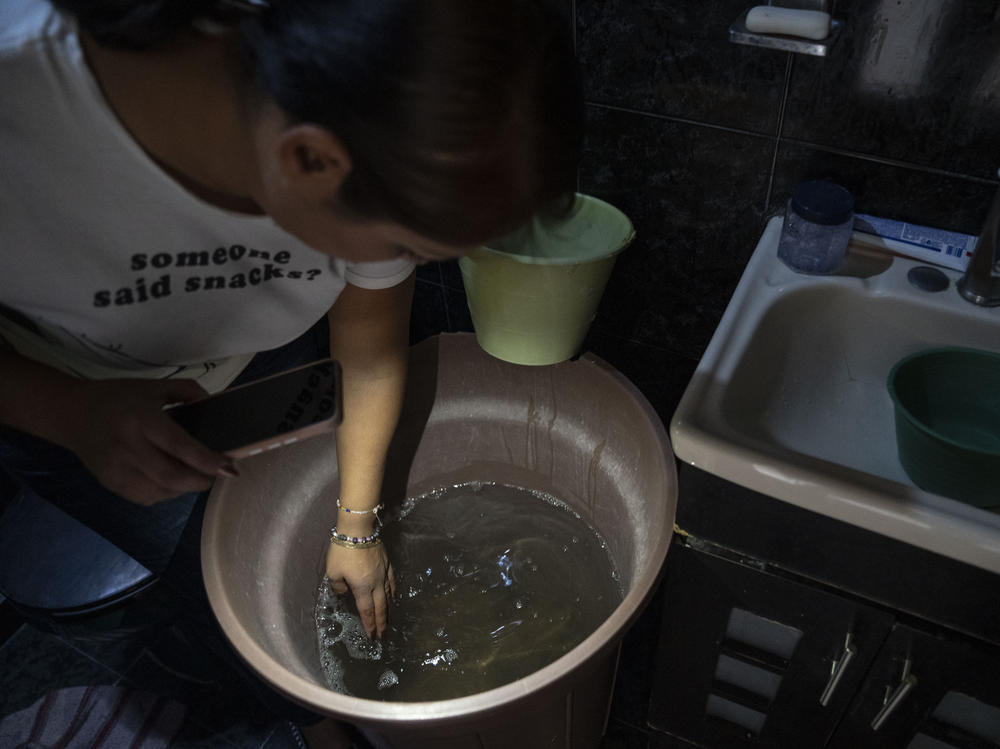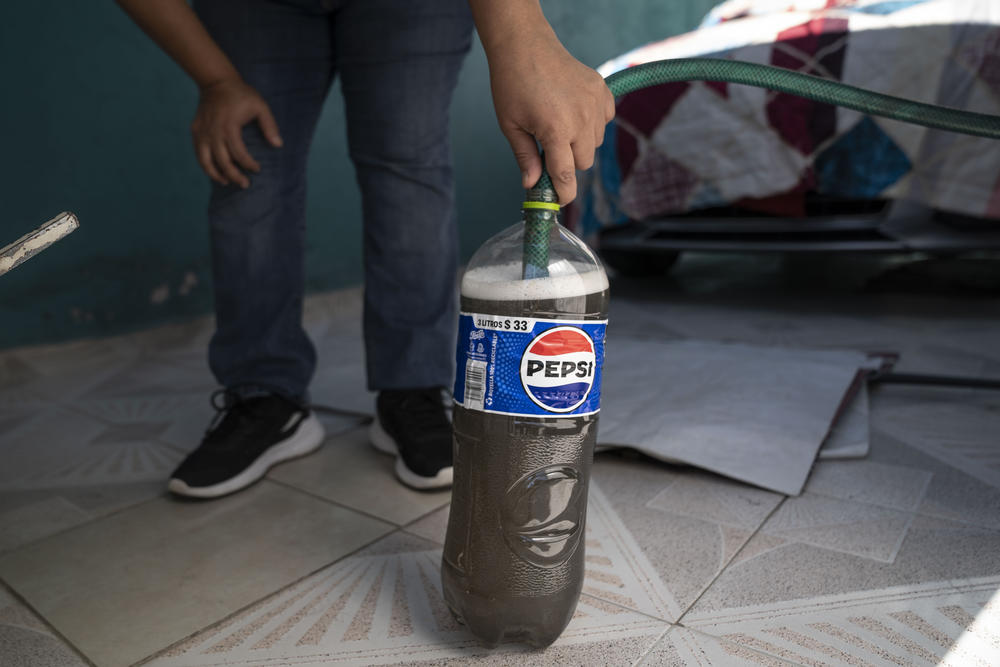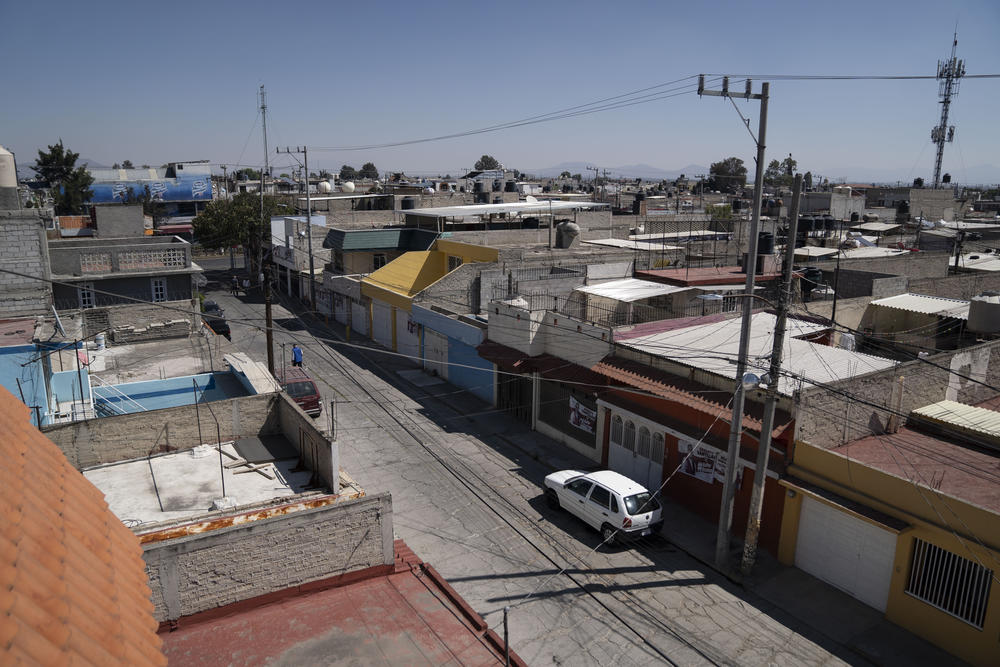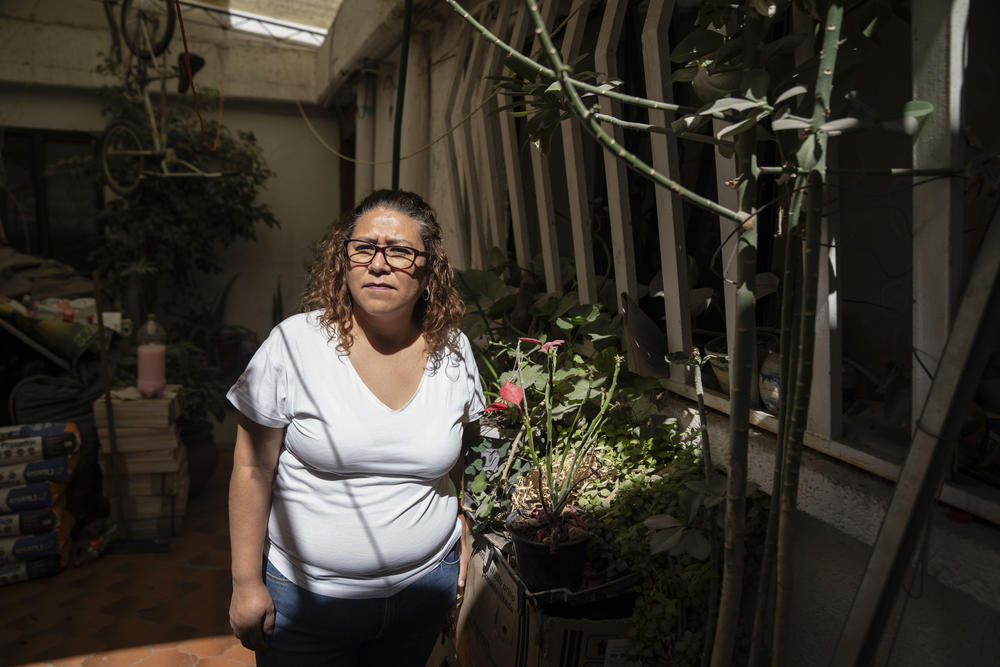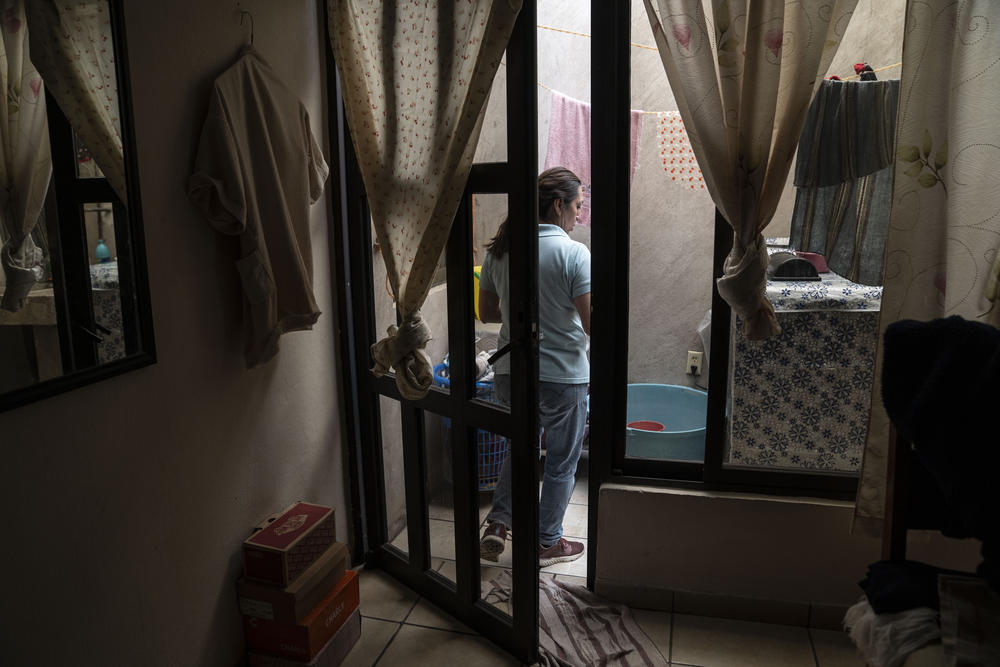Section Branding
Header Content
Mexico City's long-running water problems are getting even worse
Primary Content
MEXICO CITY — María Cristina Peláez holds up a bottle of a dark brown liquid. It looks like Coca-Cola and smells like sewage. This is the water that has come from her neighbor's tap since 2022.
It's unusable — too dirty to wash the dishes with or even clean the toilets.
"Half the street gets this water through the tap. And half the street gets no water at all," says Peláez, who lives on a residential street in Ecatepec, a working-class city on Mexico City's northern edge.
Around 40 of Peláez's neighbors crowd around, nodding in agreement. They are furious and exasperated. To make do, they pay for private companies to truck in nondrinkable water so they can do basic household chores. Peláez spends about $70 a month on the deliveries. That's on top of the clean drinking water nearly all Mexicans have to purchase as well.
It's a bad situation on the verge of becoming exponentially worse. Climate change and mismanagement have exacerbated the inequalities between those who have access to water and those who don't.
The reservoirs that supply the Cutzamala water system, which furnish about 20% of the water used by the greater Mexico City area's 22 million residents, are drying up. They have fallen to historic lows — around 38% capacity, according to the country's water agency — due to abnormally low rainfall in recent years. The reservoirs have historically topped 70% capacity at this time of year, according to the agency.
"The water situation in Mexico City is at a very critical level, and it's getting more severe throughout the years," says Tamara Luengo, a water expert in Mexico City and founder of the consulting firm Aqueducto.
Authorities are warning of major water shortages across huge swaths of Mexico City until the rainy season begins in June and refills the reservoirs. As this reporter worked on the story, water stopped running in her apartment building, located in one of Mexico City's upscale neighborhoods. In some parts of the city, water is so precious that armed guards accompany water tanks to make sure they aren't stolen.
Local media has been brimming with stories about a possible "Day Zero" — when water would stop flowing from the Cutzamala altogether — as early as June 26.
Politicians have downplayed those concerns. Mexico City's interim mayor, Martí Batres, said in a Feb. 20 news conference that "there is no water emergency" and attributed reports of an impending Day Zero to fearmongering by conservative political opponents.
President Andrés Manuel López Obrador has also dismissed worries and said officials are addressing the water shortage by drilling new wells as well as repairing equipment to extract more water from existing wells.
But the president's remarks have hardly quelled the brewing outrage. On at least two occasions this year, protesters blocked traffic near the offices of Mexico's National Water Commission to express outrage over inequality in water access. Wealthy Mexicans continue to fill artificial lakes for aesthetic purposes even as millions go with limited or no water access at all. Water-guzzling factories are also coming under criticism, while an unknown quantity of water is siphoned off by organized crime groups to maintain lucrative avocado orchards that have sprung up near the distant reservoirs that supply water to Mexico City.
Luengo says mismanagement and aging infrastructure play a huge role in the current crisis, noting that the city loses 40% of its water supply due to leaks in the pipes. "This unsustainable water management accentuates the severity of the water situation in the city," Luengo says.
Climate change is compounding an already volatile situation, according to Arnoldo Matus Kramer, Mexico City's chief resilience officer from 2014 to 2018 and now a partner at the accounting and consulting firm EY, working on its Climate Change and Sustainability Services Line.
"In the models of climate change, what we know is that droughts will become more drastic, more extreme in this region," Matus Kramer says. "And you don't know if the drought conditions will continue for the next three, four, five years."
In Ecatepec, Peláez says news reports of the impending water crisis have left her panicked. As it is, she says, she and her neighbors are hardly getting by on the water they buy. "We make do with the thousand liters we receive, but it's not enough," she says.
About 12 hours after the water stopped running in this reporter's apartment building, a truck arrived carting a water tank. A worker from the private company connected a tube from the tank to the building's cistern. Ten-thousand liters (over 2,640 gallons) of water began pouring in. Within minutes the sink faucet was working again.
